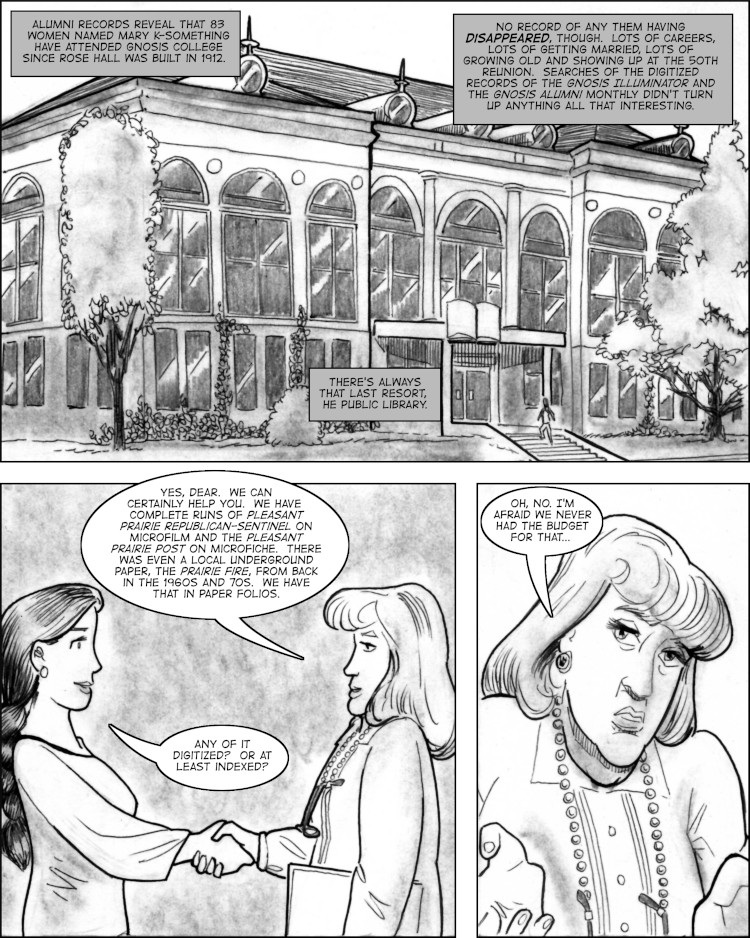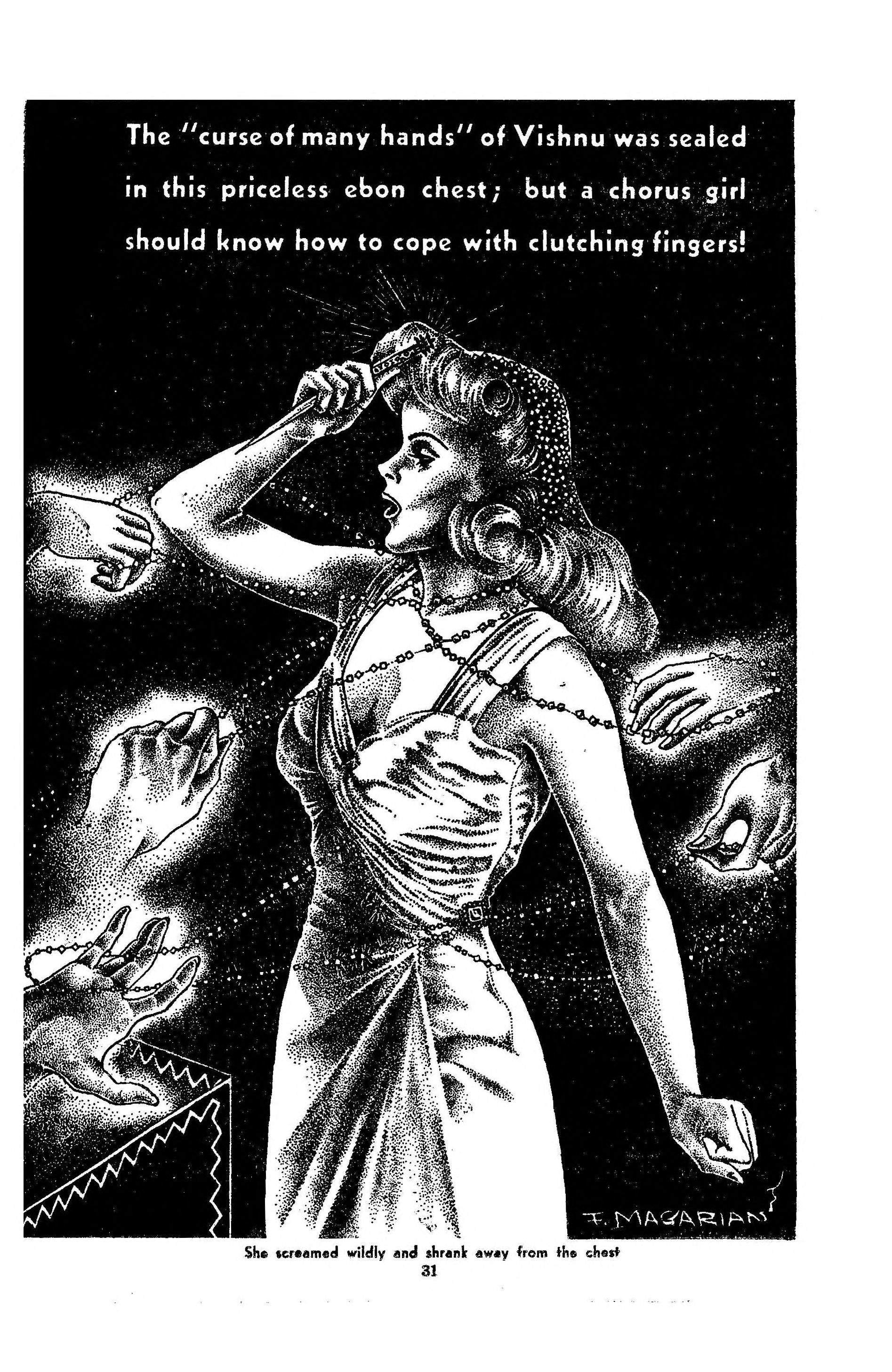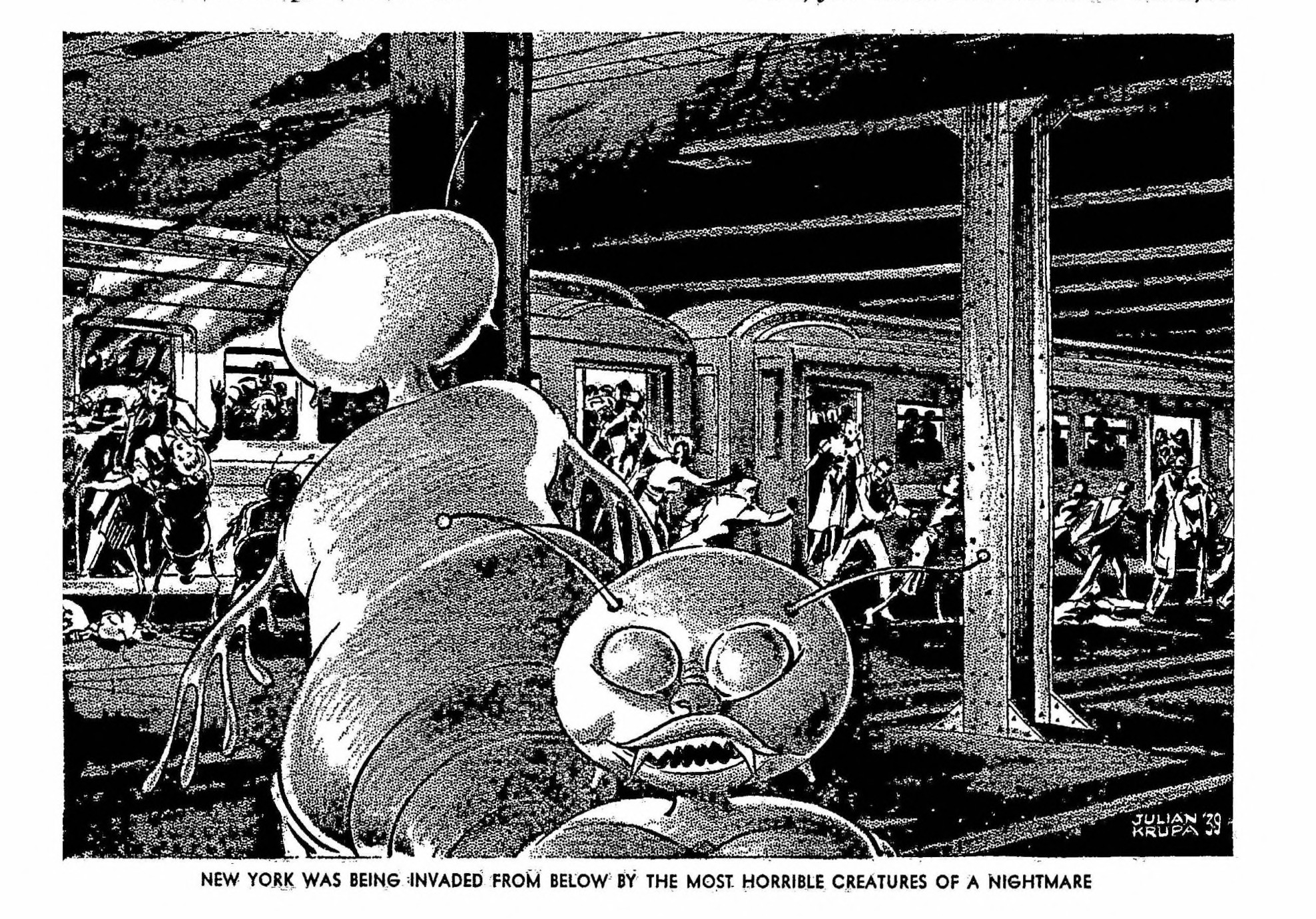

This work is licensed under a Creative Commons Attribution-NonCommercial-ShareAlike 4.0 International License.



This work is licensed under a Creative Commons Attribution-NonCommercial-ShareAlike 4.0 International License.

This work is licensed under a Creative Commons Attribution-NonCommercial-ShareAlike 4.0 International License.
PAGE 3 (Four panels)
Panel 1: ELIZA FANSHAW (“Eliza”) sits in a big wicker chair in a kind of hippie-ish apartment. She’s a bubbly-sexy blond girl. She wears thin cotton tie-dyed shirt that stretches a bit over her breasts (she’s obviously braless) and a floral skirt and sandals. Her posture indicates she’s being interviewed.
Eliza (1): People ask me, “What on earth do you think you’re doing, Eliza?” and “Don’t you know you have your whole life ahead of you?”
Comment (1): The material in quotation marks are things that Eliza has been hearing about her plans and which she is quoting back to the interviewer. The expression “what on earth” is a figurative expression meant to express incredulity or surprise. It shouldn’t be translated literally – substitute an equivalent expression if one exists in the target language.
Translation (1): La gente me pregunta: “¿Qué demonios crees que estás haciendo, Eliza?” y “¿No sabes que tienes toda la vida por delante?”
Eliza (2): And I see their point but, the thing is, about me…
Translation (2): Y entiendo su punto de vista pero, lo cierto es que yo…
SUBTITLE (3): Eliza Fanshaw, prospective subject.
Translation (3): Eliza Fanshaw, sujeto potencial de estudio.
Panel 2: Close-up on Eliza’s smiling face, which should emphasize that she has a cute little snub nose.
Eliza (4): …is that I think thing that the most amazing about being alive…
Translation (4): … creo que lo más maravilloso de la vida…
Eliza (5): … is sex!
Translation (5): … ¡es el sexo!
Panel 3: View of Eliza (in very soft focus, to the point that we can scarcely identify her as Eliza) naked, seen from behind on top of a guy).
CAPTION – ELIZA NARRATING (6): I’m not supposed to say things like this, but ever since I was fifteen, I have been seeking out sexual adventure.
Comment (6): “Ever since I was fifteen” is short for “ever since I was fifteen years old.”
Translation (6): Se supone que no debo decir cosas así, pero desde que tená quince años, he estado buscando aventuras sexuales.
CAPTION – ELIZA NARRATING (7): I’ve even acted in some experimental adult films, just to see what it would be like.
Comment (7): “Adult films” here is a semi-euphemism for pornographic films, or at least films with explicit sexual content.
Translation (7): Incluso he actuado en algunas películas experimentales para adultos, sólo para probar cómo sería.
Panel 4: Eliza, back in the same pose as in Panel 1.
Unseen interviewer (out-of-panel balloon) (8): And what was it like?
Translation (8): ¿Y qué tal, cómo fue?
Eliza (9): It was awesome!
Translation (9): ¡Fue maravilloso!
Eliza (10): But I don’t think anything could compare with those movies I saw in Anthro.
Comment (10): “Anthro.” This is a colloquial way for Eliza to say that she saw the movies in a college-level class in Anthropology.
Translation (10): Pero creo que no hay nada que pueda compararse con esas películas que vi en un curso de antropología de nivel universitario.
![]()
![]()
![]() Carnada (Español/Versión de página larga)
Carnada (Español/Versión de página larga)
Carnada (Español/Versión deslizante)
The cover illustration to the April 1943 edition of Fantastic Adventures is classic erotic mad science and was executed by the great Malcolm Smith (1910-1960), who some readers here might remember as the creator of one of the best early tube-girl images.
This issue has its share of decent interior art images, such as this one, sadly uncredited, to Harold Lawley’s story “Daughters of Darkness.”
But a favorite is this one by Florence Magarian (1912-1960), illustrating E.K. Jarvis’s novelette “The Curse of Many Hands.”

It’s decent supernatural femme peril, but what really struck me was the short biographical paragraph offered to Mrs. Magarian at the ISFDB.
Florence Lillian See graduated Polytechnic High School in Los Angeles and attended the Otis Art Institute, where she met and married Albert Ararat Magarian on May 25, 1937, in Los Angeles. During the 1940s the Magarians worked as interior artists for magazines published by Ziff-Davis Productions in Chicago. Constant fear of losing her husband to service in World War II and the demanding workload of their career caused Florence to suffer a nervous breakdown. She spent the rest of her life in and out of the mental institution at Alton, Illinois, where she passed away in 1960.
Many artists have sad life stories, but this one struck me as unusually poignant.
This issue is available to be read or downloaded at the Internet Archive.

This work is licensed under a Creative Commons Attribution-NonCommercial-ShareAlike 4.0 International License.

This work is licensed under a Creative Commons Attribution-NonCommercial-ShareAlike 4.0 International License.
PAGE 2 (Splash page)
Single panel: Helicopter view of the RV Seagoon, plowing through turquoise sea against the backdrop of a brilliant tropical sunrise. The RV Seagoon is a good-sized vessel, with an extended midsection that appears to contain some sort of giant tank. There is also a crane of sorts on deck.
CAPTION – PSEUDO-NARRATION (1): What is it that Professor Eustace Turpentine is proposing that so disturbs Captain Drummingdale?
Translation (1): ¿Qué es lo que propone el profesor Eustace Turpentine que tanto le molesta al capitán Drummingdale?
CAPTION – PSEUDO-NARRATION (2): Only one of the strangest and most significant scientific adventures yet recorded.
Translation (2): Nada más que una de las aventuras científicas más extrañas y significativas registradas hasta la fecha.
CAPTION – PSEUDO-NARRATION (3): And we document it here for you for the first time!
Translation (3): ¡Y la documentaremos aquí para ti por primera vez!
![]()
![]()
![]() Carnada (Español/Versión de página larga)
Carnada (Español/Versión de página larga)
Carnada (Español/Versión deslizante)
It is the rule in pulp: no one and nothing is more interesting to a bizarre creature than a comely female human, and this cover by of the February 1940 Fantastic Adventures by Robert Fuqua (1905-1959) exemplifies the rule. I think it is probably illustrating Bertrand L. Shurtleff’s story “New York Fights the Termanites,”, although an interior an interior illustration by Julian S. Krupa (1913-1989) suggests a different conception of the beasties.

It looks like a pretty normal rush-hour on the 6 train to me.
This issue is available to read and download at the Internet Archive.

This work is licensed under a Creative Commons Attribution-NonCommercial-ShareAlike 4.0 International License.

This work is licensed under a Creative Commons Attribution-NonCommercial-ShareAlike 4.0 International License.
PAGE 1 (Four panels)
Panel 1: CAPTAIN IVAN DRUMMINGDALE (“Drummingdale’) stands at the bow of his ship, the RV SEAGOON. Drummingdale is a gaunt, tall, naval-looking man. He wears a short-sleeved white shirt with captain’s epaulets and a seaman’s cap. It is dawn in the tropics. Drummingdale is staring out to sea and speaks without turning around.
Drummingdale (1): You’re up early today, Professor Turpentine.
Translation (1): Hoy te levantaste temprano, profesor Turpentine.
Panel 2: Drummingdale stands on the rail next to PROFESSOR EUSTACE TURPENTINE (“Turpentine”). Turpentine is a short, fat man with a white mustache and a white fringe of hair around a head which would otherwise be bald. However in this panel he is wearing a pith helmet and a twin-pocketed shirt. He looks relaxed. Drummingdale, still staring over the rail out to sea, looks anything but.
Turpentine (2): It’s a big day for us, Captain Drummingdale. Our first attempt.
Translation (2): Es un día importante para nosotros, capitán Drummingdale. Nuestro primer intento.
Drummingdale (3): Oh, aye.
Comment (3): “Aye” is “yes” with an archaic or maritime flavor. To to the extent possible, the translation should reflect this.
Translation (3): Así es.
Panel 3: Close-up on Drummingdale’s face. His jaw is clenched.
Drummingdale (4): Can’t say I approve of what you’re going to put those girls through.
Comment (4): “Can’t say” here means “I can’t say.”
Translation (4): A decir verdad, no me gusta lo que les vas a hacer pasar a esas chicas.
Panel 4: Close-up on Turpentine, though not quite as close up as on Drummingdale in the previous panel. Turpentine’s expression is one of jolly unconcern.
Turpentine (5): They both signed the release, Captain.
Comment (5): A “release” in this context is a legal document in which one person agrees not to sue another person for certain damages that might be incurred in an activity both are involved in.
Translation (5): Ambas firmaron el descargo de responsabilidad, capitán.
Turpentine (6): They understand what they’re doing.
Translation (6): Entienden lo que están haciendo.
![]()
![]()
![]() Carnada (Español/Versión de página larga)
Carnada (Español/Versión de página larga)
Carnada (Español/Versión deslizante)
Comet was another short-lived magazine (five issues in 1940 and 1941) that, unlike A. Merritt’s did not tend to attract top-of-the-line talent. Nonetheless this March 1941 cover by Leo Morey hints at the tube girl meme, and interior art by the very obscure Michael Mirando hints at…tentacles?
This issue is available to read and download at the Internet Archive.

This work is licensed under a Creative Commons Attribution-NonCommercial-ShareAlike 4.0 International License.